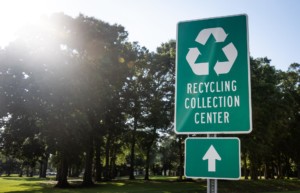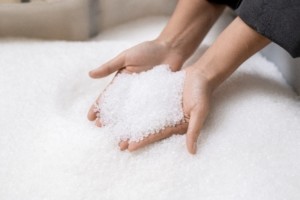This website uses cookies so that we can provide you with the best user experience possible. Cookie information is stored in your browser and performs functions such as recognising you when you return to our website and helping our team to understand which sections of the website you find most interesting and useful.
News
The Top Four Pieces of Information Architects Need to Make an Informed Product Selection on PVC/Vinyl
In a recent survey of architects, designers, and building facility managers they were asked the question “What is the most important information you need about PVC/Vinyl to make more informed product selections?” – Here are the top four things architects specifically indicated they need to make informed PVC product selections.

- Health and Safety in Use
What do health and safety mean in accordance to use? It means that when the occupants are in the space the materials are safe for them to be using and safe for them to be around. PVC is made up of 57% chlorine which is derived from salt. Once chlorine is processed into vinyl, it is chemically locked into the product more tightly than it was in salt. When vinyl is recycled, landfilled, or disposed of in a modern incinerator, chlorine gas is not released into the atmosphere. Vinyl products are able to meet low volatile organic compounds (VOC) requirements in standards such as FloorScore®, Green Label Plus, and GREENGUARD. click here.
- Product Transparency Declarations
The vinyl industry is committed to being transparent in vinyl production, both in materials and sustainable practices. To increase the transparency of product content, companies and manufacturers are adding Environmental Product Declarations (EPDs) to their products. EPDs identify the ingredients in a manufactured product and reports on how it impacts the environment across its lifecycle. A Type lll EPD (which is used within the vinyl industry) is based on ISO Standards that use a life-cycle assessment approach for evaluation. The Resilient Floor Covering Institute (RFCI) has great examples of product transparency. Beyond EPDs, another way the industry is committed to building transparency is by creating a verification program called +Vantage Vinyl, which is an independent verification process that provides assurance of sustainable achievement of company ESG commitments. With 70 percent of PVC resin going into the built environment, the vinyl industry is advancing sustainability performance in 3 impact categories where we can make significant contributions – resource efficiency, emissions, and health and safety.
- Recyclability

Understanding the opportunities to recycle materials at the end of their product service life is becoming an important consideration for specifiers. PVC can be and is recycled! Over 1.1 billion pounds of vinyl/PVC are recycled annually! Of those billion pounds, around 142 million pounds is post-consumer Vinyl/PVC materials. According to the EPA’s annual Sustainable Materials Management report, vinyl waste accounts for less than 0.6% of landfilled waste by weight. The growth of recycling programs has grown over the past few years. The vinyl industry is focused on diverting vinyl products to landfill. Currently, there are ongoing recycling pilot programs for vinyl roofing membranes and vinyl siding. These programs recover vinyl products at their end-of-life, reclaim the materials and incorporate them back into the same or other vinyl products. There is also a vinyl recycling directory available to help identify recyclers that take pre- and post-consumer vinyl materials. If you are interested in finding a vinyl recycler near you, check out the recycling directory here.

- Materials used to produce PVC/Vinyl
The final piece of vinyl information for architects concerns materials. The vinyl industry has made significant improvements to the way vinyl resin is produced. The base materials of PVC are chlorine and natural gas (petroleum and coal are used in outer countries). Since the early 1980s, PVC and Vinyl produced in the United States and Canada have eliminated the use of lead and cadmium stabilizers. To learn more about the production process of PVC/Vinyl click here.


